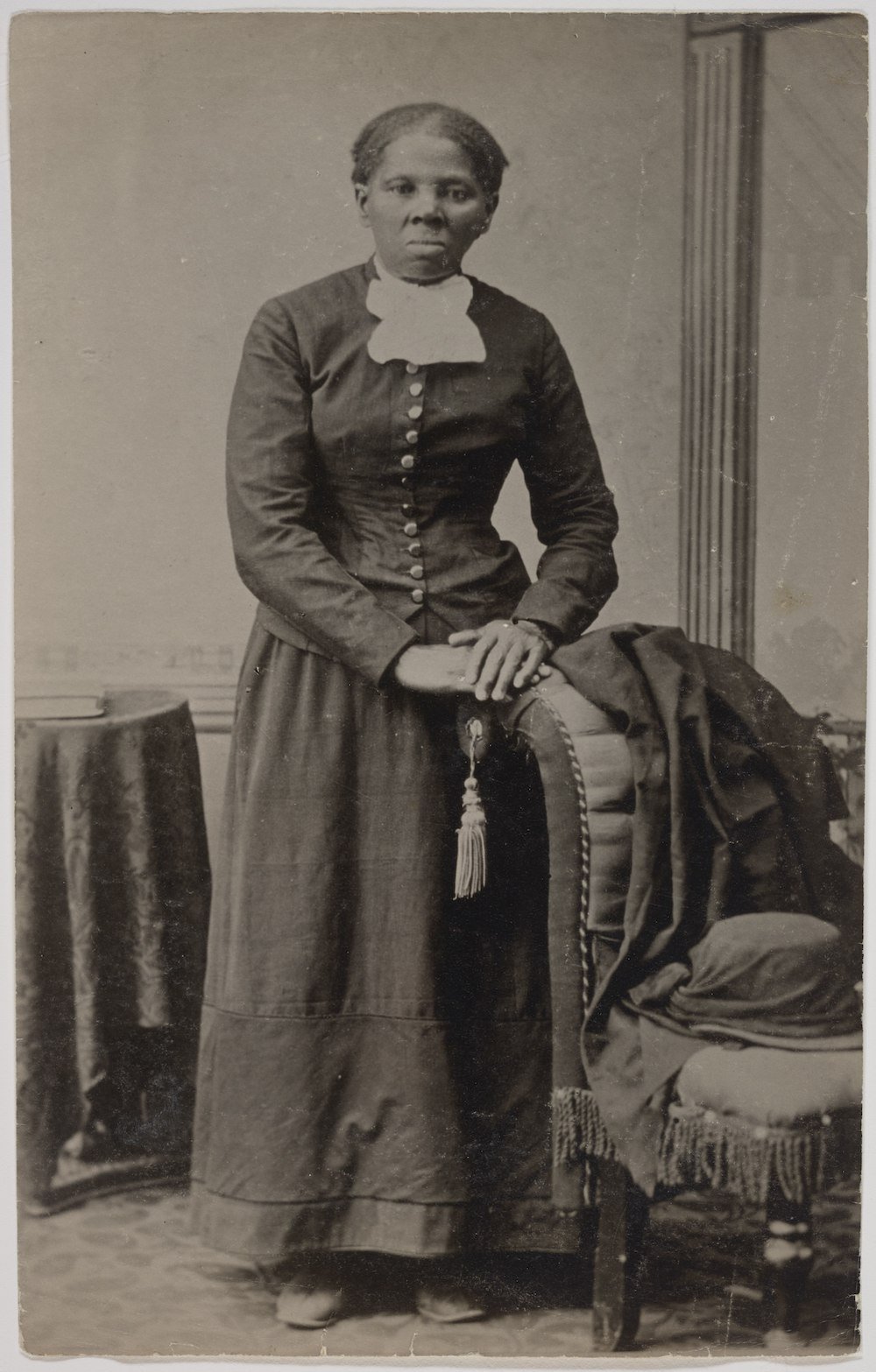Harriet Tubman escaped slavery to become a leading abolitionist. She led hundreds of enslaved people to freedom along the route of the Underground Railroad.
Harriet Tubman was born in Dorchester County, Maryland, in 1822 to enslaved parents Harriet “Rit” Green, who was owned by Mary Pattison Brodess and Ben Ross, who was owned by Anthony Thompson. She was named Araminta Harriet Ross.
Harriet had a very hard childhood. As a small girl, she was made to do gruelling chores and was physically assaulted by various masters. As a teenager, she suffered a traumatic head wound when an angry overseer threw a heavy metal weight intending to hit another enslaved person but hit her instead. The injury caused dizziness, pain, and spells of narcolepsy, which meant she would often go into sleeping spells and was difficult to wake.
Harriet suffered from this disorder throughout her life. After her injury, she began experiencing strange visions and vivid dreams, which she ascribed to premonitions from God. These experiences, combined with her religious upbringing, led her to build the Underground Railroad.

In 1849, hearing rumours that she was about to be sold, Tubman fled to Philadelphia and adopted her mother’s name, Harriet. She left behind her husband (who refused to leave), parents, and siblings. In December 1850, she made her way to Baltimore, Maryland, and from there, she led her sister and two children to freedom.
That journey was the first of some 19 increasingly dangerous forays into Maryland in which, over the next decade, she conducted upward of 300 fugitive enslaved people along the Underground Railroad to Canada. In 1857, Tubman managed to free her parents.
Travelling by night and in extreme secrecy, Tubman (or “Moses”, as she was called) “never lost a passenger”. It’s been reported that if anyone decided to turn back, thus endangering the mission, she threatened them with a gun and said, “You’ll be free or die.”

During the American Civil War, she worked as a cook, nurse, and spy for the Union Army. She became the first woman to lead an armed expedition in the war, leading several hundred slaves in the Combahee River Raid.
After the war, she retired to a property she had purchased in 1859 in Auburn, New York, where she cared for her ageing parents and played an active role in the women’s suffrage movement.
When she became ill in her later years, she had to be admitted to a home for elderly African Americans that she had helped to establish years earlier. After her death on 10 March 1913, she became an icon of courage and freedom.






Leave a Reply